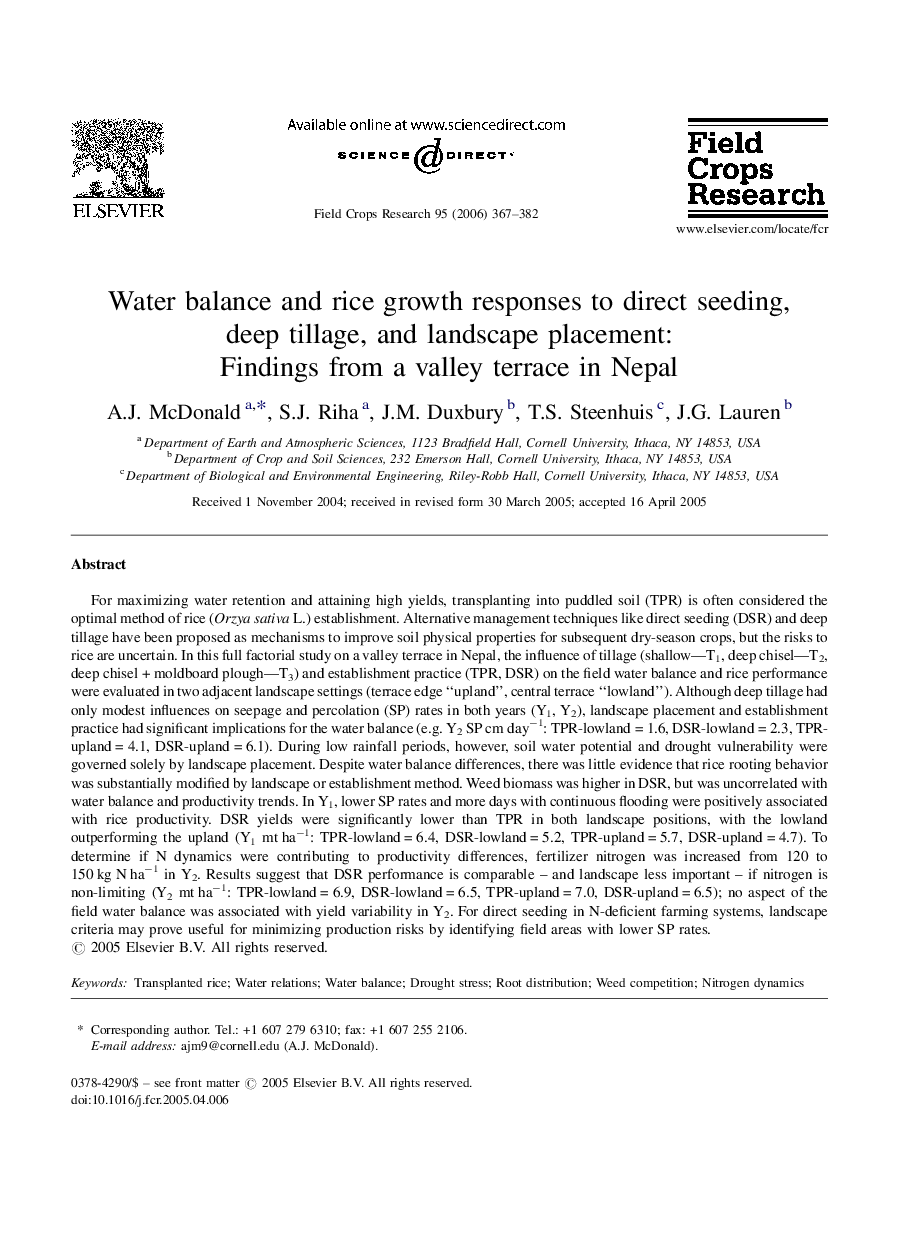| Article ID | Journal | Published Year | Pages | File Type |
|---|---|---|---|---|
| 4511798 | Field Crops Research | 2006 | 16 Pages |
For maximizing water retention and attaining high yields, transplanting into puddled soil (TPR) is often considered the optimal method of rice (Orzya sativa L.) establishment. Alternative management techniques like direct seeding (DSR) and deep tillage have been proposed as mechanisms to improve soil physical properties for subsequent dry-season crops, but the risks to rice are uncertain. In this full factorial study on a valley terrace in Nepal, the influence of tillage (shallow—T1, deep chisel—T2, deep chisel + moldboard plough—T3) and establishment practice (TPR, DSR) on the field water balance and rice performance were evaluated in two adjacent landscape settings (terrace edge “upland”, central terrace “lowland”). Although deep tillage had only modest influences on seepage and percolation (SP) rates in both years (Y1, Y2), landscape placement and establishment practice had significant implications for the water balance (e.g. Y2 SP cm day−1: TPR-lowland = 1.6, DSR-lowland = 2.3, TPR-upland = 4.1, DSR-upland = 6.1). During low rainfall periods, however, soil water potential and drought vulnerability were governed solely by landscape placement. Despite water balance differences, there was little evidence that rice rooting behavior was substantially modified by landscape or establishment method. Weed biomass was higher in DSR, but was uncorrelated with water balance and productivity trends. In Y1, lower SP rates and more days with continuous flooding were positively associated with rice productivity. DSR yields were significantly lower than TPR in both landscape positions, with the lowland outperforming the upland (Y1 mt ha−1: TPR-lowland = 6.4, DSR-lowland = 5.2, TPR-upland = 5.7, DSR-upland = 4.7). To determine if N dynamics were contributing to productivity differences, fertilizer nitrogen was increased from 120 to 150 kg N ha−1 in Y2. Results suggest that DSR performance is comparable – and landscape less important – if nitrogen is non-limiting (Y2 mt ha−1: TPR-lowland = 6.9, DSR-lowland = 6.5, TPR-upland = 7.0, DSR-upland = 6.5); no aspect of the field water balance was associated with yield variability in Y2. For direct seeding in N-deficient farming systems, landscape criteria may prove useful for minimizing production risks by identifying field areas with lower SP rates.
